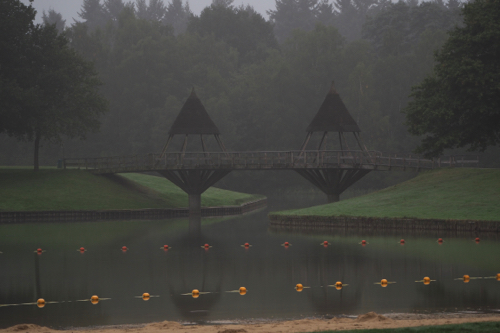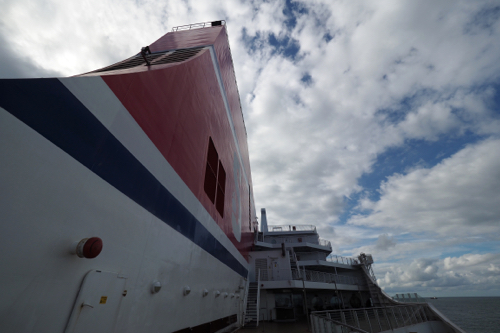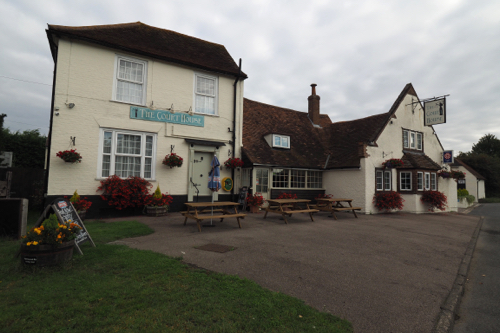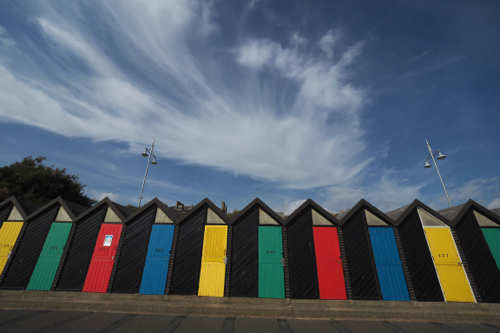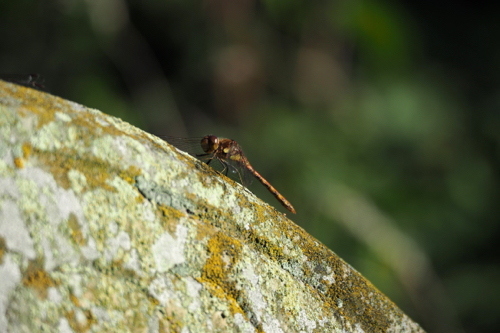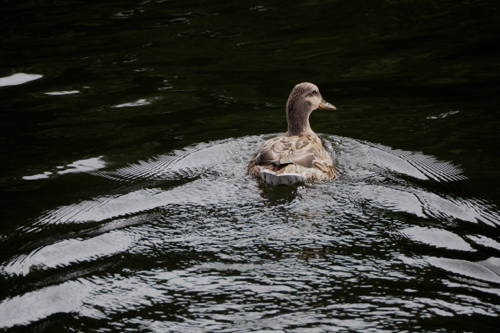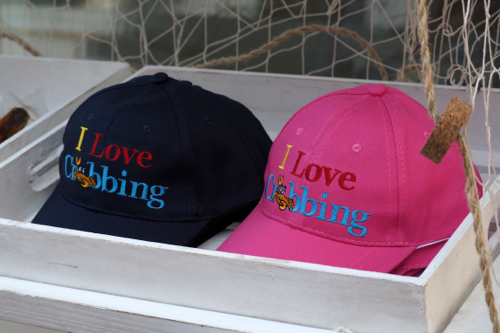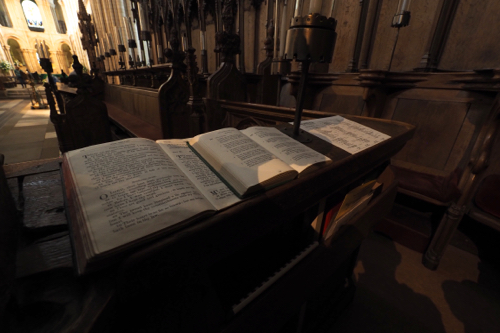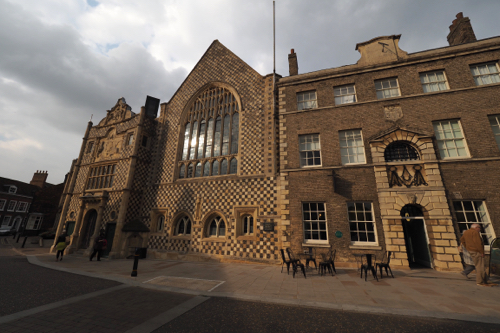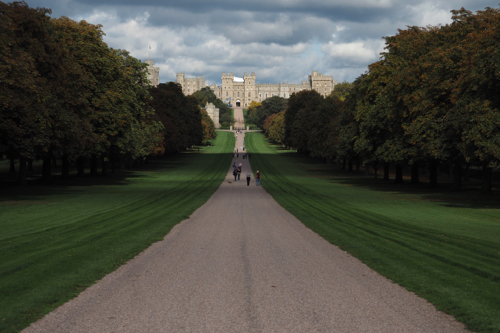September 18, 2017. Berlin, Germany to Oldenzaal, Netherlands.
It was just over 500 kilometres from Berlin to Oldenzaal in Holland. Again we encountered rain and roadworks on the way. This made the trip over six hours, rather than the five the TomTom had estimated.
We were deep in the Dutch countryside.
Our hotel was the Erve Hulsbeek Koetshuis and it was surrounded by the Hulsbeek, a large recreational park. This was a Dutch summer resort in ‘the nature’.
Late in the afternoon we went for a stroll around the Hulsbeek, it certainly catered for a variety of activities.
It was originally an estate and in the 70s it was transformed into a recreational park. Three lakes were created by sand excavation and the sand was then used to make the De Thij residential area in Oldenzaal.
The Hulsbeek is 230 hectares that’s been set aside for sailing, fishing, swimming, skate boarding, table tennis, basketball, soccer, cycling, rowing and horse riding.
These were a few of sports we identified, there were a number that we couldn’t.
September 19, 2017. Oldenzaal, Netherlands to Great Bromley, Colchester, United Kingdom.
The Hotel Erve Hulsbee was shrouded in fog when we left.
It was about a two hour drive to catch the ferry from the Hook of Holland to Harwich.
No rain and no roadworks.
The trip was easy until we discovered the complexities of Dutch roundabouts. They seem to go out of their way to make them difficult to negotiate.
I got confused and ended taking the same, wrong exit twice.
We then encountered further problems when we went to check the Renault onto the ferry.
The customs official believed that our red French number plates were only for cars that were being exported.
Of course our paperwork didn’t support this.
After an hour of waiting and numerous phone calls, he finally let us drive on.
We had no plan B.
Unlike the ferry from Tallinn to Helsinki, the cross channel boat was relatively empty.
There was gambling but no live entertainment.
Trucks seemed to be the main cargo and the ‘truckies’ even had there own area.
It was a much longer voyage than the trip across the Gulf of Finland.
Six hours as opposed to two.
We arrived in Britain late in the day and we had to very quickly get used to driving on the left of the road with a left hand drive car.
Thea felt rather exposed, sitting on the right of the Captur, especially as all the oncoming drivers thought that she was in control and looked at her.
That night we had dinner at our accomodation, the Courthouse Hotel. It was a typical English pub and very different to what we had got used to over the last few months in Europe.
Duck Liver Pâté, Deep Filled Pies, Hand Carved Roast Beef, Home Cooked Eggs with Chips and Spotted Dick with Custard.
We hadn’t had food like that since we were last in Britain.
September 20, 2017. Great Bromley, Colchester to Lowestoft, Suffolk, United Kingdom.
A ‘light’ breakfast at the Courthouse Hotel was a mountain of scrabbled egg on a slab of toast.
I’m glad we didn’t order the full English one.
The hotel was actually a court house that witnessed the trials of witches, who, if found guilty, were strung up on the gallows, that were just over the road.
Built in the 1600s, it was first a pub then the court house and now a pub again.
That night we were staying at a B&B in Lowestoft and couldn’t check-in until 4pm.
We therefore had some time on our hands.
The drive from Great Bromley to Lowestoft was only 111 kilometres so we diverted to Colchester to do some shopping. The main task was to get a new SIM for the travel phone.
We then reconfigured the TomTom to take the country roads. That’s when we discovered the Snape Maltings.
Situated on the River Alde at Snape in Suffolk, the Snape Maltings is an art complex, best known for its concert hall.
The maltings were originally built by Newson Garrett in the 1800s. The site ceased to be a malting by the 1960s and after the concert hall was opened there in 1967 it became the home of the Aldeburgh Music Festival.
September 21, 2017. Lowestoft, Suffolk, United Kingdom.
We ask the owners of the Corner House, our B&B in Lowestoft, for some touring suggestions.
They gave us quite a list.
One trip looked very interesting. It was a boat ride up Lake Lothing to the Mutford Lock.
Unfortunately it didn’t run on Thursday and it was Thursday.
We did get to do a few other things, like walk along a wind swept beach into Lowestoft and then on to Ness Point, which is most easterly point in England.
We then walked back into town via the Stanford Arms. This is supposedly the best pub in Lowestoft, especially for craft beer.
We were hoping to go there for dinner that night and wanted to check it out.
It’s also closed on Thursdays.
We did do a lot of walking that day and managed to tick a few things off the list of things to see.
Late in the day we drove, rather than sailed, to Mutford Lock and walked around the park that’s at the end of Lake Lothing.
The lock separates the fresh water, of Oulton Broad, from the salt water, of the North Sea.
Lowestoft is a seaside town in the very east of England. It is also one of the oldest, with human habitation dating back 700,000 years.
Lowestoft has been settled by people from the Neolithic, Bronze and Iron Age as well as Romans and Saxons.
Dogs are really appreciated in the UK – especially in the pubs.
On our last night we walked a little further down the road from our B&B and found the Oddfellows Hotel – the place was packed.
The dining room was full so we ate in the bar and there we met a number of people and their dogs.
Dogs were very welcome in the Oddfellows, so long as they didn’t sit on the seats.
A very reasonable request, if you like having your best friend drinking with you.
One chap literally drank with his King Charles Spaniel. The dog had a tiny drop of his beer in her water bowl.
Politically incorrect but they were both very content.
September 22, 2017. Lowestoft, Suffolk to Great Yarmouth, Norfolk, United Kingdom.
Our next stop was at Great Yarmouth, which was only 17 kilometres away.
We had to be out of our B&B in Lowestoft by 10:30am and couldn’t check into the next one until 3:00pm, so there was plenty of time to do some local touring.
After walking around Lowestoft and enjoying the better weather we headed off.
First stop was Beccles, a market town in the Waveney area.
The main feature of Beccles is a detached church bell tower, dating back to the 16th century.
It dominates the small town.
From there we did another short drive to Burgh Castle. We thought it was a village but it actually turned out to be a castle as well.
And a very old one at that.
It is situated on the River Waveney and was developed as a fort town, by the Romans in AD300, as a defence against the Saxons. At that time it was believed to be known as Gariannonum.
There are only a few of the massive walls remaining at Burgh Castle but you could get an idea how impressive it once was.
That night was our 44th wedding anniversary, so we were looking to find somewhere special for dinner.
Our hosts suggested that fish and chips was an iconic meal in Great Yarmouth. I don’t think they understood the significance of the celebration.
We ended up at the Imperial Hotel, a posh pub on the outskirts of town.
It was full of people who had obviously eaten there many times before. They all knew the menu off by heart and the waitress, Andrea, by name.
September 23, 2107. Great Yarmouth, Norfolk, United Kingdom.
Breakfast in the UK isn’t easy.
People stare at us, as if we have two heads, when we don’t want a ‘Full English Breakfast’ or a ‘Pot of tea’ or ‘Mug of coffee’
After the simplest breakfast we could get we boarded the ‘Vintage Broadsman’ for a two hour trip on the Norfolk and Southwark Broads.
Travelling up the Bure River the captain delivered an eloquent description of our journey. All entirely in English, as you would expect, but not what we were used to.
The weather wasn’t great but most people chose to sit on the top deck, in the open air.
The Vintage Broadsman was crowded and so was the river. Leisure craft, yachts and small, self guided, tourist boats we constantly passing by.
It seems that boating on the broads is a very popular pastime.
And, as seems to be so common in the English speaking world, everyone waved to each other.
Google let us down in Great Yarmouth.
We searched for coffee and Mocha was the best rated, with great reviews.
We should have gone to Starbucks.
We searched for a good pub with food and Google found the Mariners Hotel. The place was empty and they no longer serve food.
Should have gone to KFC – no, that’s going too far.
Mobility scooters are more common than push bikes in Great Yarmouth.
It probably has something to do with the demographics.
These coastal towns are relatively poor. This is evident in the hotels, restaurants, food and entertainment on offer.
Great Yarmouth is a hybrid of Coney Island in New York State and Blackpool in Lancashire.
It lacks the charm of Brighton in Sussex and has the tackiness of Vegas, but is much more forgettable than both.
There are some grand old Victorian mansions and terraced houses behind the gaudy facade of gaming machines, fast food outlets and strip clubs.
On the way back to our B&B in Great Yarmouth, we found Fastolff House in Regent Street. This beautiful office building was constructed in 1908 by RS Cockrillin, in the Art Nouveau style.
In Britain Art Nouveau is also known as Arts and Crafts.
September 24, 2107. Great Yarmouth to Norwich, with a side trip to Cromer, Norfolk, United Kingdom.
We weren’t that sad to leave Great Yarmouth but it had been an experience that will remain with us. We stopped for coffee in Cromer, which is about an hours drive away.
The contrast between the two towns was amazing.
Cromer hadn’t forgotten about the fact that it was a seaside town and that people like to be beside the seaside.
The beach was full of families and the town wasn’t clogged up with commercial distractions.
Cromer is the crab capital of England.
The Cromer Crab is the commercial mainstay of the town and the tourists love them as well.
The Cromer Pier is the centre point of tourist activity with many families trying their hand at catching the local delicacy.
Most of the crabs caught are very small and part of the ritual is to take them from the pier, in your crab bucket, and then walk down to the beach and put them back into the North Sea.
There are many menacing seagulls, hovering overhead, hoping to get an easy feed.
The crabs are a bonus to local business as the surrounding shops sell crab caps, crab buckets and crab nets, all to make your crabbing that much more enjoyable.
I am sure that time spent, in the less commercialised Cromer would make for a much more rewarding family holiday experience than staying at Great Yarmouth.
It would probably also be a lot cheaper than constantly forking out for rides, mini golf, slot machines and fast food.
Apart from the crabs, Cromer has the Church of Saint Peter and Saint Paul, dating back to the 13th century. As well as the Hotel de Paris which was originally built as the residence of Lord Suffield in 1830.
That night we found the, weirdly named, Unthank Arms in Norwich. It was about 10 minutes walk away from our hotel, the Best Western George.
It was great and vast change from the previous night.
Good food, wine and beer with an excellent ambiance and great staff.
September 25, 2017. Norwich, Norfolk, United Kingdom.
Lens issues, yet again.
There was a nasty rattle in my 7-14mm wide angle lens and it didn’t sound good.
This meant that we had to find a Olympus repair centre, as well as a laundry, while we were in Norwich.
Google let us down again, just as it had done in Great Yarmouth. We were trying to find a place for breakfast, this time Google maps and the TomTom didn’t know one end of a road from the other. We eventually went to a shopping mall. It was easy to find and you can always get a cup of coffee and a croissant in a mall.
After finding a local laundromat, we went in search of a camera repair centre. The good news was that the guy in the shop didn’t think the problem was terminal. The bad news was that to get it fixed the lens would have to be sent away, to Portugal, for the repairs.
Frustrated with laundry and camera issues we went for a long walk around Norwich.
Norwich is one of the most important cities in England. From the Middle Ages until the Industrial Revolution it was the second largest city, after London.
Besides the obvious standouts of Norwich Cathedral and Norwich Castle there are other delightful areas in this Medieval city.
One of my favourites was the Royal Arcade. Designed by architect George Skipper, in the Arts and Craft style in 1899. The arcade has a humble single storey exterior but a stunning two storey interior. There are decorative tiles featuring flowers and peacocks as well as exquisite stained glass windows of trees and birds.
Late that night we got the very sad, sad news regarding Phil, Thea’s younger brother. He had tragically passed away in his sleep, while watching the Brownlow Medal on TV.
Suddenly all our future plans were thrown into confusion.
Our immediate priority was to get back to Australia as soon as we could.
September 26, 2017. Norwich, to Sutton Bridge Spaulding via King’s Lynn, Lincolnshire, United Kingdom.
We arranged a late check-out with the hotel so we could start to make arrangements for our return home.
The original plan was to drop off the Renault Captur at Orly Airport in Paris, so that had to be reworked. Fortunately Renault Euroddrive were very understanding and arranged for us to drop it off at Heathrow.
Qantas were also excellent and so were our travel insurance company, so we went ahead and made all the arrangements.
We couldn’t get a flight to Melbourne immediately, as it was the Grand Final weekend, so we had a couple of days to fill in.
On the way to Sutton Bridge Spaulding we made side trip to King’s Lynn. This was a good move as there was nothing at Sutton bridge.
King’s Lynn was known until 1537 as Bishop’s Lynn and is a seaport and market town. The River Great Ouse is a central part of the town as is the Purfleet Quay. There are some other attractions such as the King’s Lynn Minster or Saint Margaret’s Church, which was built in the 12th century. Plus some wonderful municipal architecture like the Town Hall or Trinity Guild Hall which was built in 1421.
At Sutton Bridge Spaulding we were staying at the Anchor Hotel. This was a typical English pub, in the middle of nowhere.
Fortunately they had a restaurant, that served good English fair and some good draught beers and wine.
September 27, 2017. Sutton Bridge Spaulding, Lincolnshire to London Heathrow, United Kingdom.
Relatively easy drive to Heathrow. There were some roadworks, something we haven’t seen since we have been in the UK.
We stopped at Saint Neots for a coffee and arrived mid afternoon at the Park Inn by Radisson.
The location of the hotel was excellent as it was 50 metres from where we had to drop the car off and only 600 metres from Heathrow Airport.
September 28, 2017. London Heathrow, United Kingdom.
This was our last full day in England and we needed a long walk.
What better place to have one but along the Long Walk in Windsor Great Park.
It was only about 12 kilometres to Windsor, from our hotel in Heathrow.
The stroll was relaxing, about 8.5 kilometres from the castle to Copper Horse Statue of King George III and back.
The sun shone as the jets thundered overhead – we were right under the flight path.
As we passed through Deer Park we could see the deer in the distance. Then suddenly one buck broke out of the woods and came straight towards us.
It was a tense few seconds until we realised that he was heading to a muddy hollow for a wallow.
After a coffee for me and lunch for Thea in Windsor, we headed back to the hotel to pack.
This was the last drive in the Captur. We had travelled 8,931 kilometres in the Renault and 925 kilometres in the Opel Mokka.
We had started in spring, missed summer completely and now it was autumn.
September 29, 2017, London Heathrow, United Kingdom to Melbourne, Australia.
After some final packing we dropped the Captur off to the Renault Eurodrive depot. They then drove us, in the Captur, to Heathrow to catch QF flight 10 to Melbourne via Dubai.
